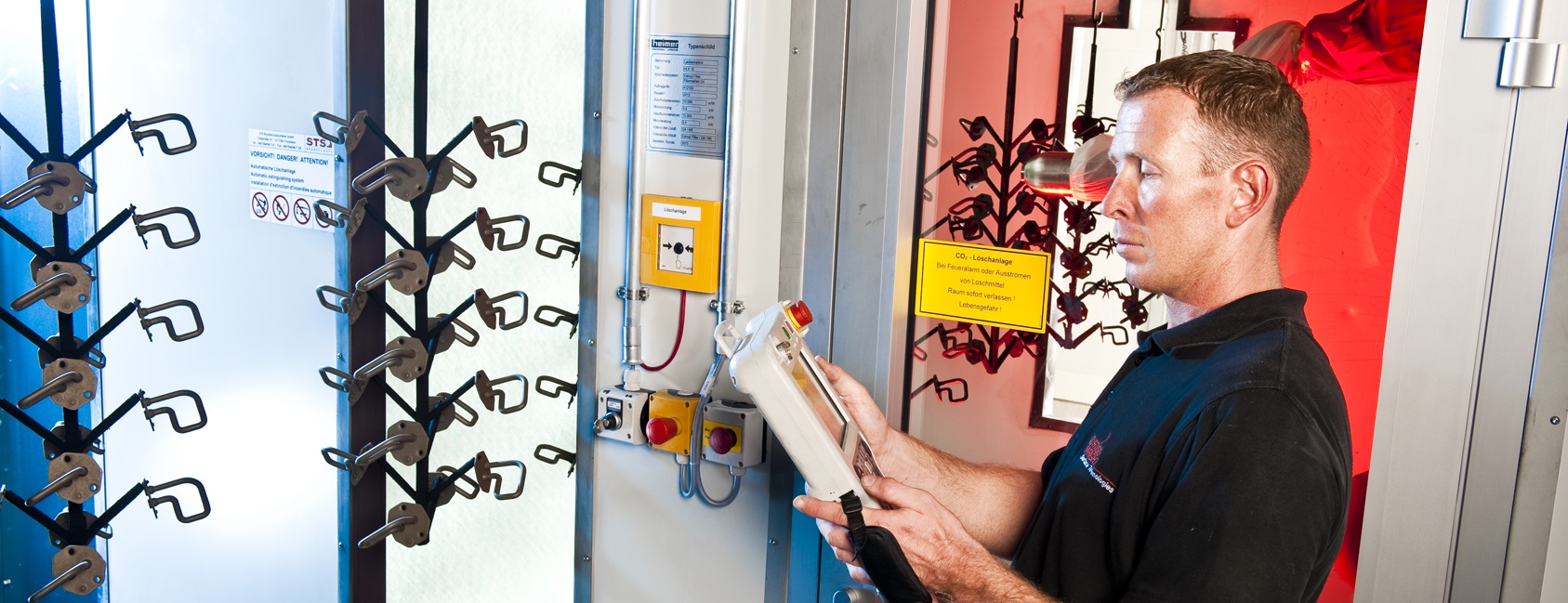
When applying any coating technology it is imperative that pre-treatment of the surface prior to the application of any coating is performed.
Pre-treatment of a surface ensures that the area is clean, free from impurities and fully prepared prior to commencing the coating application process; this can dramatically enhance the adhesion of the coating and reduce surface corrosion.
We offer a comprehensive range of pre-treatments, some of which are dependent upon the surface you are coating, to find out more about our range click on the details below or alternatively contact us to discuss your requirements in more detail.
Our vapour degreasing service uses the latest technology and is an ideal pre-treatment that is used prior to the application of a coating or the commencement of welding. The components or materials are placed in a sealed chamber where the degreasing solution is vaporised, this then condenses onto the item itself and is effective at removing grease and machine lubricants from even the most complex components. The process vaporises all moisture which leaves the surface with a dry finish with no water spots.
Aqueous degreasing is a method used for removing light oils from the affected critical component or surface. The process combines the use of specialised equipment with a water-based, biodegradable cleaning compound and dependent upon the compound chosen, the oil can be either emulsified or split to the surface. Once the oil reaches the surface it is skimmed into a separation compartment where it is isolated from the cleaning area leaving your part or surface clean and oil free.
Alkaline cleaners are effective as a pre-treatment for surfaces and components as they dissolve grease, oil or other contaminants from the affected area, once the pre-treatment has been undertaken and the surface or component is fully prepared it is advisable to begin the coating treatment as soon as possible to avoid the onset of surface oxidation.
The advantage of using abrasive grit blasting as a pre-treatment is that ordinarily no other cleaning or surface preparation is required beforehand. Blasting replaces the need to sand or wire brush the surface or component and can save on time and associated labour costs and more importantly produces a high standard of cleaning. Grit blasting gives an overall cleaner finish and allows for a better tooth for bonding, we utilise both aluminium oxide and chilled iron in our blasting process details as follows:
As an abrasive this is an angular and durable method and it can be recycled many times. It is the most common type of abrasive grain used in surface blasting due to its ability to be recycled, the associated costs and the hardness of the product. Aluminium oxide penetrates and cuts even the hardest metals and is 50% lighter than similar metallic abrasives, this means that it is suitable for use on thin materials as it substantially reduces the surface stress that other heavier abrasives would create.
This is a high performance abrasive which can be used to clean all types of metal. It removes paint, adhesive, grease and many other types of residual contaminants quickly and efficiently, although it does leave a harsher key and therefore is not suitable for use on softer metals such as aluminium.
Prior to the application of the final coating a phosphate conversion coating can be added to provide added protection against corrosion. This pre-treatment effectively grows columnar crystals on the surface which the final coating can then mechanically interlock with, giving added corrosion resistance. It is one of the most important surface treatments and without using this method a number of metal finishing procedures would not be possible.
We offer both zinc and manganese phosphate coatings which can be carried out to the appropriate MIL spec if required, which phosphate coating is used is dependent upon the size of the crystals required within the crystalline layer or the coating thickness.
It is common practice to apply a post phosphate treatment to the surface or component following the phosphate conversion pre-treatment, in fact in many specifications it is a requirement. These post treatments can improve the appearance and resistance to both corrosion and abrasion once the post phosphate treatment has had time to be fully absorbed in the crystal structure and we offer military spec chromic acid seal and oil post phosphate treatments.
© 2024 Curtiss-Wright Corporation | User agreement | Privacy Notice | Cookies | Sitemap | T&Cs | GPG | Investor Relations | Terms of Use